Sony Cyber-shot WX5 Review
Sony Cyber-shot WX5
Notable for introducing 3D Sweep Panorama to the Sony range, does the 12-megapixel, 5x optical zoom DSC-WX5 perform just as well in two dimensions?
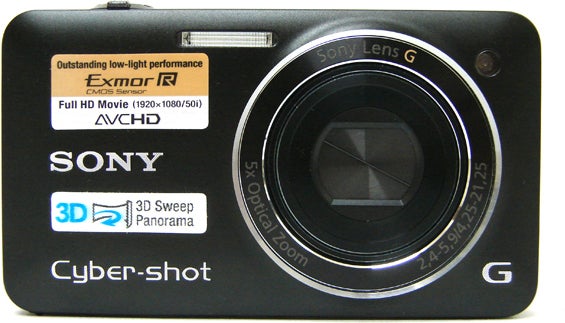
Verdict
Pros
- Built quality
- Sweep panorama mode works well
- Good value
Cons
- No in-camera 3D preview
- Slow memory card access
Key Specifications
- Review Price: £226.50
- 3D capture
- Panoramic mode
- Full HD video recording
Available in smart-looking brushed silver or sophisticated matt black incarnations, the pocket-sized 12.2-effective megapixel Cyber-shot DSC-WX5 was much trumpeted on its release in late 2010 for being one of only two Cyber-shots to feature Sony’s attention-grabbing 3D Sweep Panorama mode. This merges up to 100 separate images captured in a rapid fire ‘sweep’ of the camera into one elongated image.
But, in practice, though you can shoot with 3D in mind, for which the camera generates an MPO image file (as opposed to a JPEG in 2D mode), you can’t get the stereoscopic effect on the actual camera screen like you can with the ‘true 3D’ Fujifilm Finepix W3. You’ll need a 3D TV set proper to get the benefit; the alternative, if you don’t, being to shoot a 2D version of the same scene, of course. Both options are presented on the halfpenny sized shooting mode wheel at the WX5’s rear. The results are both fun and effective, although we wouldn’t recommend you buy the camera for this software-enhanced feature alone.
This being a Sony camera you can expect to pay a slight premium. The cheapest online deals don’t vary much from what it will cost you in your local Sony centre – £229 at the time of writing (£100 cheaper than the twin lens and sensor-incorporating Fuji W3). At that price it actually feels very fair value, resting solidly in the palm, despite being marginally shorter in width than a business card. It’s pretty much direct competition for Casio’s Exilim EX-ZR10, with which it shares a very similar design aesthetic and headline resolution, although overall the Sony is smaller by about half an inch in width. Official proportions are 91.7mm x 51.9mm x 21.5mm and the body-only weight is just 130g.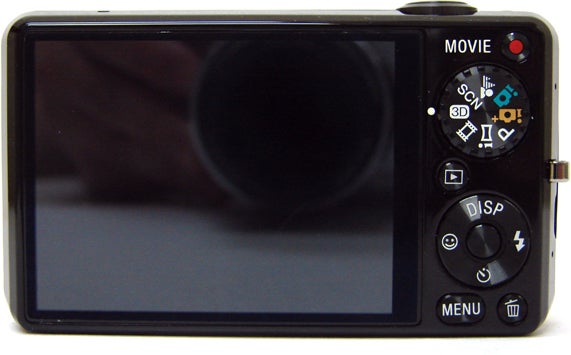
Among the WX5’s other plus points are that solid-feel metal body, a 5x optical zoom – equivalent to 24-120mm in 35mm film terms – to pull distant subjects closer, a high 460,800-dot resolution 2.8-inch LCD, AF tracking, and 10 frames per second burst shooting (with dedicated drive mode button), plus a bright f/2.4 lens. It also features the increasingly ubiquitous camcorder-style one-touch video record button at the back for the near instantaneous capture of Full HD 1920 x 1080 pixels clips, no matter which alternative stills mode might be selected on its separate shooting mode dial at the time.
There’s not physically enough of the otherwise well-constructed WX5 for Sony to have provided a grip, so there isn’t one. Instead the thumb of the right hand finds a resting place on the shooting mode dial at the back, whilst the LCD quickly becomes smeared with fingerprints as you try to keep the camera steady and level with your other hand. As such you’ll be constantly wiping the screen clean. Well-labelled buttons and cartoonish icons alongside the display aid ease of use, but clash slightly with the sophisticated air imparted by the faceplate.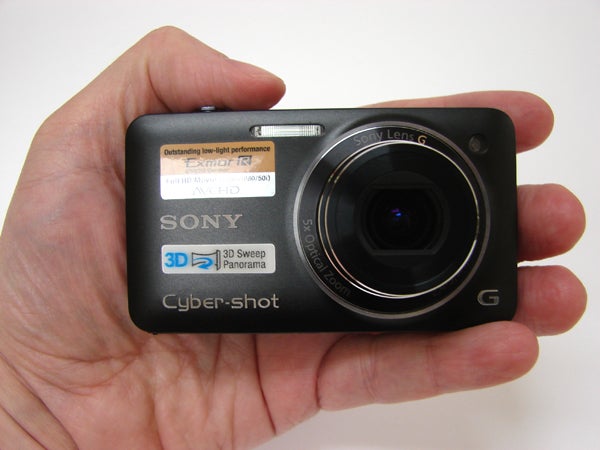
Whilst you might find the aforementioned headline features, or a near match, on a competing compact, the WX5 is further billing itself as not just any old compact by virtue of featuring an Exmor R CMOS sensor, a type of chip first introduced into Sony’s digital SLR range. This isn’t the same physical size as an APS-C DSLR sensor, but it has enabled the inclusion of technologies such as the WX5’s Superior Auto Adjustment mode.
This combines exposure information from up to six different images to produce one low noise, high dynamic range shot, whilst a new background defocus option combines two images to simulate the effect one might achieve with a DSLR and a wide aperture; which is mostly suitable for portraiture. Both options are squeezed in between the six other options crammed on to the camera’s tiny shooting mode dial, so you don’t have to go hunting through menu screens – they’re just a finger flick away.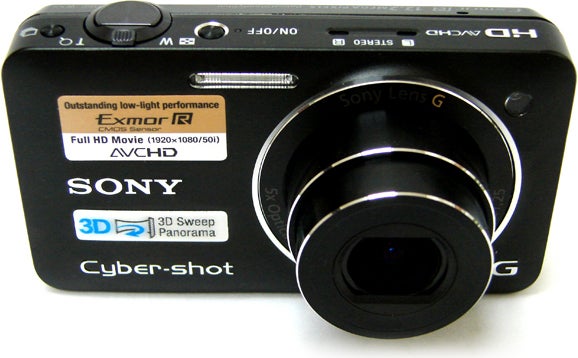
As well as the previously touched upon 2D and 3D Sweep Panorama settings, the WX5 hides a further option for those of us not lucky enough to own a 3D TV at present, but who still ache for the 3D effect. Sony calls this feature Sweep Multi Angle Pan with the camera shooting in an arc as usual – here through a slightly curtailed 15 frames – and when done, the camera will play this back as a lenticular style animation, visible if you tilt the camera from side to side.
Obviously you only get this effect when viewing the image on the back of the WX5 itself, or if hooking the camera up to a 2D TV via supplied cabling. If you want to record the scene for posterity and shove it on your hard drive, we feel the 2D Sweep Panorama option is the option to go for. All these fancy features have an effect on battery life, such that the WX5’s wafer-thin rechargeable lithium-ion unit powers down after around 230 shots on a full charge. In this respect, the WX5 is pretty average for its class of camera.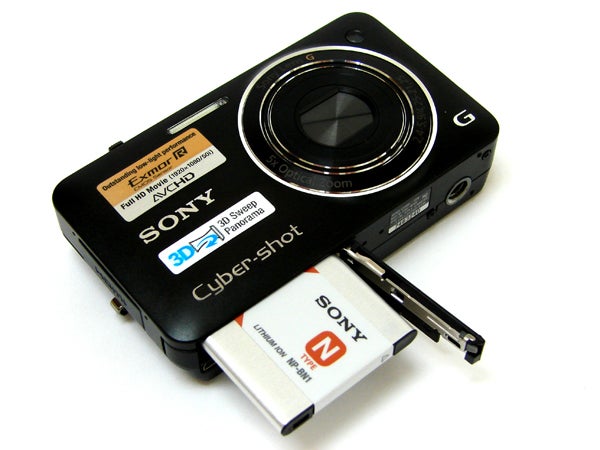
The recessed on/off button powers-up the WX5 in two seconds. The large and obvious shutter release button is encircled by the zoom lever, the lip of which has a roughened surface so your finger doesn’t slip from it. Press the button down half way and focus and exposure is determined in a mere second, with AF points highlighted in green. A choice of Sony’s Memory Stick Duo or more widely available SD share a single slot at the base, with full resolution JPEGs saving in around two to three seconds. That’s much slower than the blink-of-an-eye write speed of the dual processor equipped Casio EX-ZR10, but is still a pretty standard timing for even a fairly classy point and shoot such as the WX5.
We found that the differences between shots taken in Superior Auto Adjustment mode and regular auto adjustment mode on the Sony WX5 were quite subtle. If anything the Superior mode has the more digitally ‘processed’ look of the two. Also, because detail is maintained in both shadows and highlights in Superior mode and shoehorned into the same image, the overall result can appear a bit flat and lacking in contrast. For us then, regular ‘intelligent auto adjustment’ often produced more natural looking results that were, in fact, truer to the scene at the time.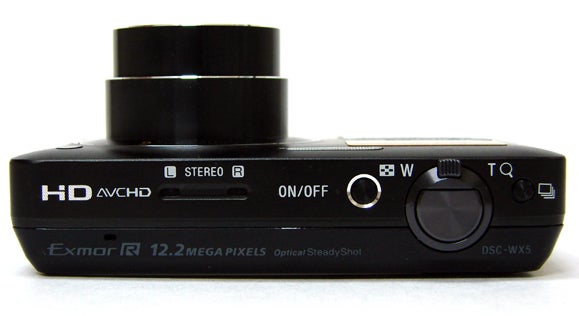
As regards video capture, as well as being pleased to find HDMI output on such a diminutive camera, we were also pleased to find that the optical zoom can be adjusted mid recording, and that any mechanical noise as it makes its adjustments is so quiet as to be almost unnoticeable. Add to this the ability to record stereo sound at the touch of a button, and as long as you’ve got an up to date PC that can handle the AVCHD files the WX5 produces, it’s an able tool for those who just want to grab the odd ‘movie’ clip occasionally.
Although images would preferably be slightly sharper, the naturalistic/slightly warm colour tones that the WX5 delivered can be adjusted in Photoshop to produce a result fairly close to what we desired – although depending on which mode we were using they were occasionally washed out and flat.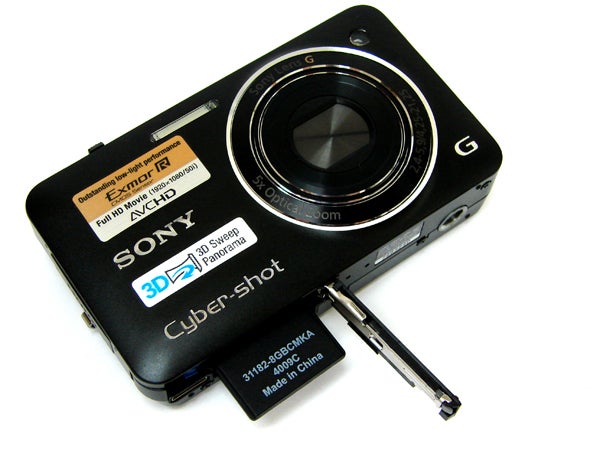
Praise goes to Sony for at least trying to push the envelope of the kind of quality that can be achieved with a humble point and shoot compact. Even if the familiar pitfalls of all digital cameras – such as pixel fringing and fall off of focus towards the corners at maximum wide angle setting – still make an appearance in our test shots here, and we’d recommend sticking to ISO400 or lower if you want clean images. Although even the top whack ISO3200 setting is clearer and more defined than most.
The WX5 is not perfect, but at this price at least it’s perfectly acceptable. Though it didn’t set our increasingly small world alight, we’re happy to report that there’s more to the Sony Cyber-shot DSC-WX5 than just a pretty fascia. It’s class act, offering most of the latest must-haves (or at least from 2010’s vantage point) in a package that’s definitely pocket friendly.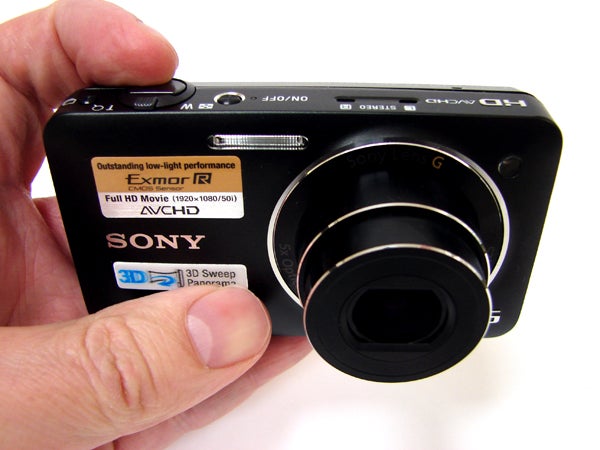
As we’ve noted, if it’s the 3D aspect that’s drawing you in, the Fuji W3 has a lot more wow factor and delivers ‘true’ stereoscopic images rather than software enhanced versions that show you whether they’re working before you press the shutter release. If instead it’s the Exmor R sensor and promise of DSLR-style imagery, well, don’t believe the hype. A high performance compact such as the Panasonic Lumix DMC-LX5 or Samsung EX1 would be a better bet for the photo enthusiast who values pocket-sized portability as much as quality.
Verdict
The WX5 delivers plenty of bang for a modest buck, so in that respect any potential purchaser will be sure to find some aspect of its performance to clasp to their bosom, if they can just ignore the slightly more gimmicky aspects. Manage that and the WX5 is one of those cameras with which you can’t go far wrong.
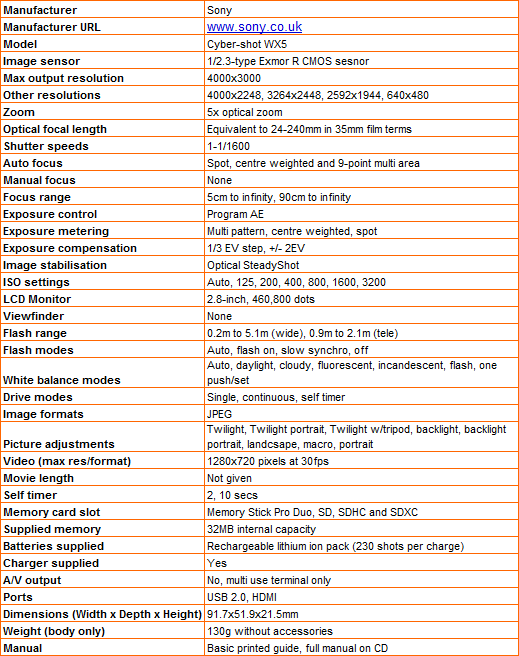
A selection of images taken at the camera’s incremental light sensitivity settings, using only available daylight.
—- 
—-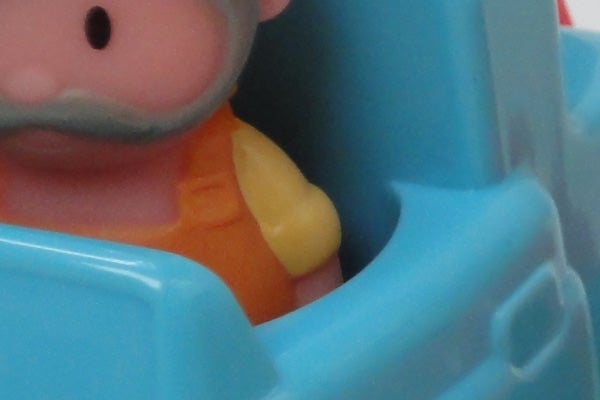
Shooting with the WX5 set to Auto ISO, it has chosen a setting equivalent to ISO320 to competently do the job and deliver a result free of noise.
—-
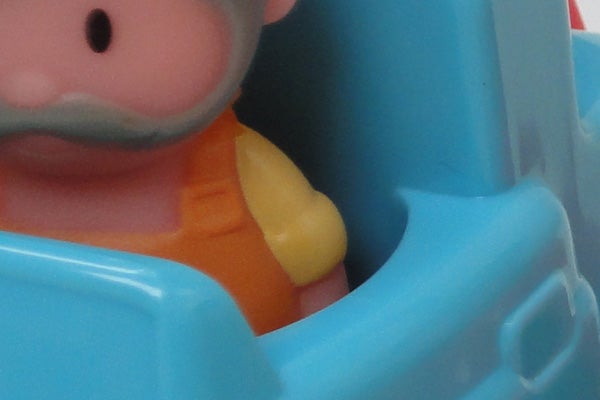
The WX5’s first manually selectable setting is ISO125 equivalent.
—-
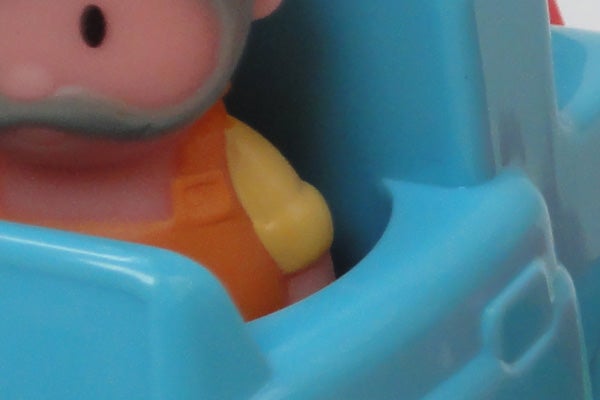
Same framing at ISO200 and a barely discernible difference for noise/grain.
—-
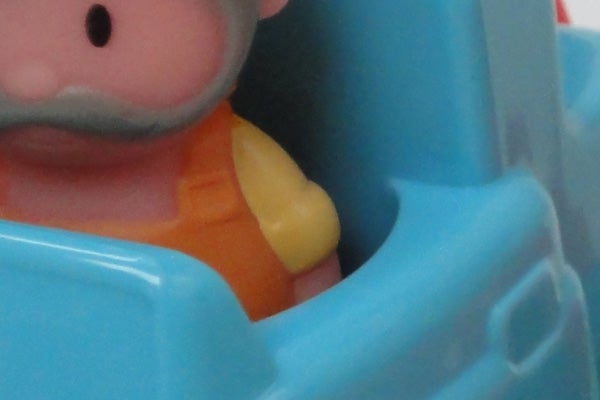
We’re at ISO400, usually the setting at which noise begins to creep in on if we’re unlucky. Here grain is hidden by a slight softening of detail.
—-
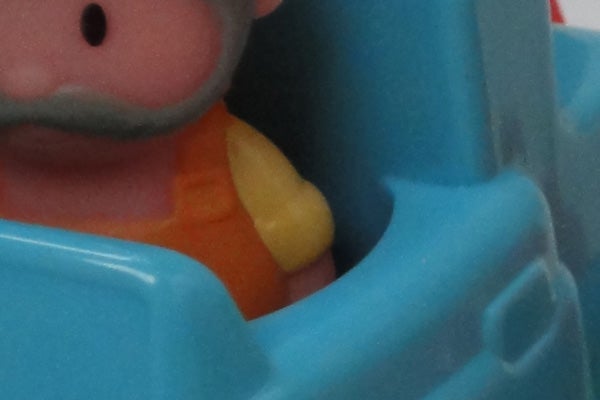
Matters start to go downhill at ISO800 with both softened detail and noise creeping in to shadow areas on close inspection.
—-
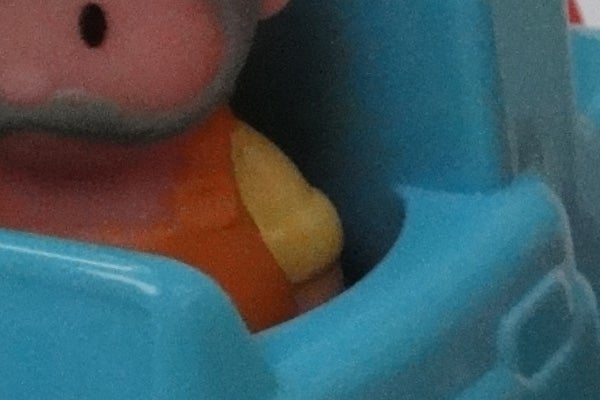
A distinctly gritty look across the entirety of the image at ISO1600, even when viewed full frame. But, conversely, this has the effect of slightly sharpening up the image’s soft edges.
—-
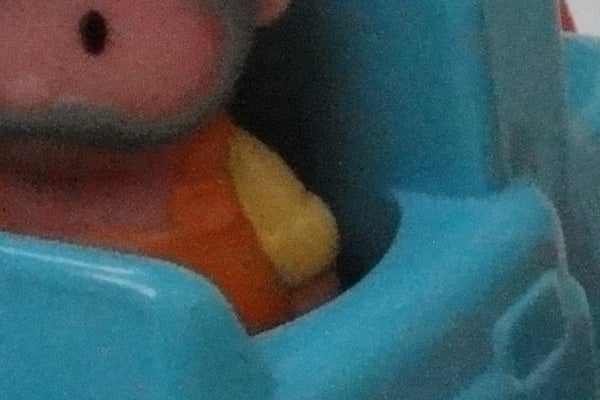
The same is true of the top ISO3200 setting. More grain has resulted in a sharper edged look overall. But we’d prefer to stick below ISO400 for a completely clean bill of health, so not the most impressive low light showing ever from the WX5.
—-
A more general selection of unadjusted test shots are revealed on this page and next to act as an evaluation of the Sony Cyber-shot WX5 in a variety of shooting conditions.
—-
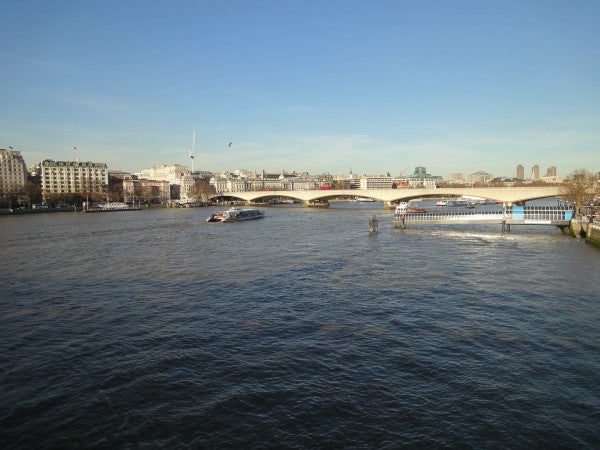
The WX5 features a 5x optical zoom equivalent to 24-120mm in 35mm film terms to pull distant subjects closer. Here’s an idea of the quality at maximum wideangle setting, which reveals some mild barrel distortion and softening of detail towards the corners of the frame. The image is evenly exposed and the colours realistic however, if the overall shot is lacking a little in terms of contrast.
—-

By comparison this shot taken from the same vantage point and at the telephoto end of the zoom is better in terms of contrast, and though a little softer overall, is still a more than acceptable result – particularly when shooting handheld as well as at a distance.
—-

OK, so here the camera didn’t have to face the challenge of dealing with subjects moving through the frame that a busy street scene would present – it handles that well too, by the way – but the WX5 has impressed us with a fairly even exposure throughout (apart from almost shooting into the sun at the far right hand corner) and a reasonably seamless panorama.
—-

We’ve got tell-tale leaning/conerging verticals here that indicate we’re shooting at the widest 24mm equivalent setting, rather better disguised by natural rather than man made subjects. Then again, such distortions can be used creatively to impart a sense of grandeur, as with the side wall of this church here.
—-
”’Here are some general test shots taken with the Cyber-shot WX5 to give an idea of performance ability when it comes to image quality, dynamic range, colour rendition and performance at various focal ranges.”’

Yes, the colours were this vivid straight out of the camera, and on an overcast winter’s day too. The rather flat light has helped us to maintain the detail of the swans feathers and avoided the usual burnt out highlights we get when attempting to photograph such wildfowl’.
—-
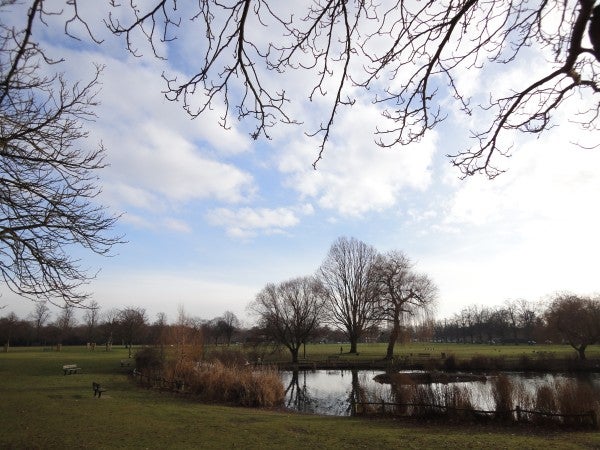
A pretty evenly exposed extreme wideangle image that has not been altered in any way. Colours are natural, yet we feel they could further benefit from a subtle boost in Photoshop. We’re disappointed however to see so clearly the loss of sharpness at the top left and right corners of the frame that’s fairly common shooting with a humble compact at wider settings’.
—-

Some golden light and rich blue skies on a winter’s afternoon are perfectly captured by the Sony. If anything the sky was even more blue than portrayed here. The leaning verticals betray the fact that this was taken at maximum wideangle setting, but again this can add visual impact and architectural presence.
—-

Sony compacts were notorious in the past for their displays of quite alarming pixel fringing between areas of high contrast. Shooting upwards toward the sky and with a dark foreground, the WX5 has actually done better than we expected. Fringing is evident here on the uppermost tree branches, but only if you zoom in really close to deliberately look for it.
—-
Trusted Score
Score in detail
-
Value 8
-
Image Quality 8
Features
| Camera type | Digital Compact |
| Megapixels (Megapixel) | 12.2 Megapixel |
| Optical Zoom (Times) | 5x |
| Image Sensor | 1/2.3-type Exmor R CMOS |
| Optical focal length | Equivalent to 24-240mm in 35mm film terms |
| Shutter speed | 1/1,600 |
| Auto focus | Spot, centre weighted and 9-point multi area |
| Manual focus | None |
| Max output resolution | 4000x3000 |
| Other resolutions | 4000x2248,3264x2448, 2592x1944, 640x480 |
| Focus range | 5cm to infinity,90cm to infinity |
| Exposure control | Program AE |
| Exposure metering | Multi pattern, centre weighted, spot |
| Exposure compensation | 1/3 EV step, +/- 2EV |
| Image Stabilisation | Optical SteadyShot |
| ISO settings | Auto 125, 200, 400, 800, 1600, 3200 |
| LCD Monitor | 2.8-inch, 460,800 dots |
| Viewfinder | None |
| Flash range | 0.2m to 5.1m (wide), 0.9m to 2.1m (tele) |
| Flash modes | Auto, flash on, slow synchro, off |
| White balance modes | Auto, daylight, cloudy, fluorescent, incandescent, flash, one-push/set |
| Drive modes | Single, continuous, self-timer |
| Image formats | JPEG |
| Picture adjustments | Twilight, Twilight portrait, Twilight w/tripod, backlight, backlight portrait, landscape, macro, portrait |
| Video (max res/format) | 1280x720 pixels at 30fps |
| Movie length | Not given |
| Self timer | 2, 10 secs |
| Memory card slot | Memory Stick PRO Duo, SD, SDHC and SDXC |
| Supplied memory | 32MB internal capacity |
| Batteries supplied | Rechargeable lithium ion pack (230 shots per charge) |
| Charger supplied | Yes |
| A/V output | No, multi use terminal only |
| Charging/Computer Connection | USB 2.0 |
| HDMI | Yes |
| AV Out | No |
| Manual | Basic printed guided, full manual on CD |
Physical Specifications
| Dimensions Width (Millimeter) | 91.7mm |
| Depth (Millimeter) | 21.5mm |
| Weight (body only) (Kilogram) | 130g without accessorieskg |

